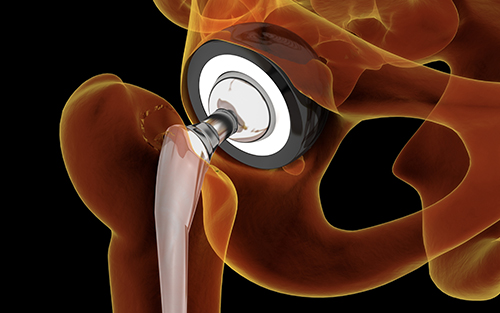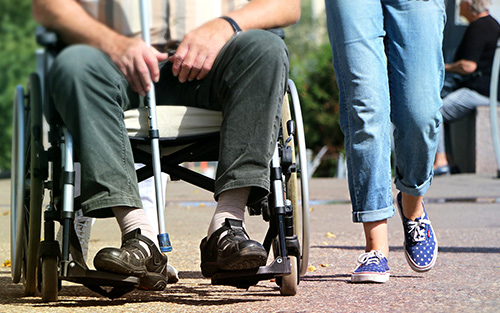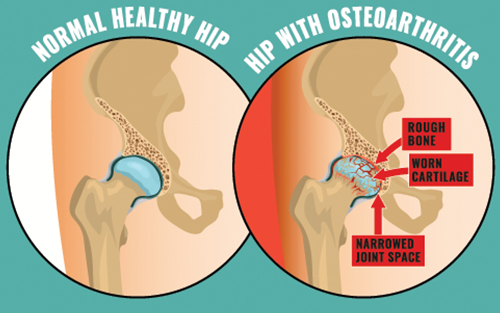Is your chronic hip pain disrupting your quality of life and mobility? Modern advancement in hip replacement surgery and recovery time may enable it to be the solution to your painful and inconvenient dilemma.

yourfootpalace.com gathered detailed information about hip replacement surgery, the post-operation recovery process, and some of the forms of arthritis that lead to the condition.
What is Hip Replacement Surgery?
Total hip arthroplasty or total hip replacement is a major surgery that involves damaged bone and cartilage being removed from the acetabulum (hip socket on the pelvis bone) and the femoral head (upper end or tip of the thighbone). After sedation, the replacement procedure typically goes as follows:
• An incision is made on the outer thigh to expose the hip joint
• Damaged cartilage and bone are removed from the acetabulum
• A reamer is used to smooth and prepare the acetabulum
• The two-piece acetabular component is fitted (one outer metal part and one inner plastic part with a socket)
• The femoral head is removed, and the femur is prepared to receive the stem portion of the prosthetic
• The stem is attached to the femur, and a metal ball is attached to the end of the stem
• The metal ball is fitted into the plastic socket
• The surgeon confirms the range of motion for the prosthetic and closes the incision.
Since the surgery was first performed in 1960, hip replacement surgery has continuously been one of the most successful medical procedures in all of medicine. In the United States, more than 300,000 hip replacements are being performed annually, as reported by the Agency for Healthcare Research and Quality AHRQ.
Hip Replacement Surgery Recovery
Even though total hip replacement is considered major surgery, you may find the following recovery schedule astonishingly fast-paced:
After Your Hip Replacement Surgery is Over – You are moved to a recovery room, monitored for several hours, then returned to your hospital room.
Hospital Release – In most cases, the typical hospital stay is one night. The length of your stay will depend on your age, health, and post-op evaluation. Some patients are released on the same day as the surgery.

Physical Therapy – You will be instructed to perform regular exercises designed to return strength and mobility to your hip. Before you are discharged from the hospital, you will be up and walking with a walker or crutches and performing simple exercises.
For the first two to three weeks, you will meet twice per week with a physical therapist. Over the following three to six weeks, you will gradually increase your walking distances and return to your normal physical activities.
Incision Healing – Bandages can be removed five days after surgery. For most people, it takes 10 to 15 days until any staples or sutures can be removed. Before your discharge from the hospital, you receive instructions on caring for the wound, and what to do if any signs of infection appear.
Swelling Reduction – Due to sluggish blood circulation after surgery, your calf and ankle will likely swell and slowly return to normal over 12 weeks. To help reduce this swelling:
• Rest with your legs elevated (knees above the level of your heart) multiple times per day for 10 to 20 minutes at a time.
• Apply cold packs to swollen or tender areas for 10 to 20 minutes 4 or 5 times per day.
• The walking routine you were given will also help reduce the swelling.
Blood Clot Prevention – To reduce the risk of developing deep vein thrombosis (DVT), adhere to the following throughout your recovery:
• Walk even short distances every 2 to 3 hours; this promotes blood circulation.
• Perform the foot, ankle, and knee exercises prescribed to you by your physical therapist.
• Take your blood-thinning medication.
The idea is to continually engage in physical activity, promote blood circulation, and prevent deadly blood clots.

Massage therapy, such as reflexology, may be applied 10 to 15 days after surgery to encourage blood flow and stimulate the muscles and nerves of the affected leg (consult your physical therapist for guidance).
Surgeon’s Instructions – For a total recovery, all of your orthopedic surgeon’s instructions must be followed. Follow-up meetings should be scheduled throughout the first year after surgery to monitor your progress.
When is Hip Replacement Surgery Necessary?
Once you and your physician have explored non-surgical options such as oral medication, physical therapy, injections, etc., you may be asked to consider hip replacement surgery to relieve your pain and restore your mobility. Some of the medical conditions that lead to the necessity of total hip replacement are:
Post-Traumatic Arthritis – This is a condition that occurs following the dislocation of the hip or severe fracture of the pelvis and results in the joint surface cartilage suffering damage. Pain and stiffness occur from direct trauma, or the ball and socket lose their congruity.
Avascular Necrosis of the Femoral Head – When blood circulation to the femoral head or “ball” becomes impaired, the bone in the ball dies and collapses.
Once the femoral head flattens, losing its round shape, a poor fit occurs and causes a loss of the remaining joint surface cartilage (arthritis).
Hip Osteoarthritis – This condition is known as “wear and tear” or degenerative joint disease (DJD) and remains localized to the joint. Osteoarthritis conditions develop slowly and occur as the cartilage in the hip slowly wears away.

Rheumatoid Arthritis – This inflammatory arthritis condition falls in the same group as lupus and psoriatic arthritis. The condition occurs as the body’s cells attack joint surface cartilage, resulting in swelling, stiffness, and pain.
There are many medical therapies and treatments for rheumatoid arthritis which may attack any joint in the body. A rheumatologist should closely monitor this condition.
Don’t assume that an arthritis diagnosis means necessary surgery. Of the more than 100 types of arthritis, there are only a few of them that account for over 95 percent of all hip replacements performed.
Recovering from Total Hip Arthroplasty
In this article, you discovered the definition and procedure for hip replacement surgery, the recovery process, and some of the causes of the condition.
Regaining your quality of life and dignity may depend on your decision to have hip replacement surgery after your non-surgical options have been explored.
By not having total hip replacement surgery, you may be perpetuating pain, discomfort, and risks for other conditions that are all completely avoidable.
Sources:
https://www.ucsfhealth.org/education/recovering_from_hip_replacement_surgery/
orthoinfo.aaos.org/en/treatment/total-hip-replacement/
thedacare.org/News-and-Events/Symptoms-and-Conditions/How-Long-Does-it-Take-to-Recover-from-Hip-Replacement-Surgery.aspx
(706) 521-5290
(678) 963-5958
To view the original version on Foot Palace, visit: https://www.yourfootpalace.com/hip-replacement-surgery-recovery/
No comments:
Post a Comment
Note: Only a member of this blog may post a comment.